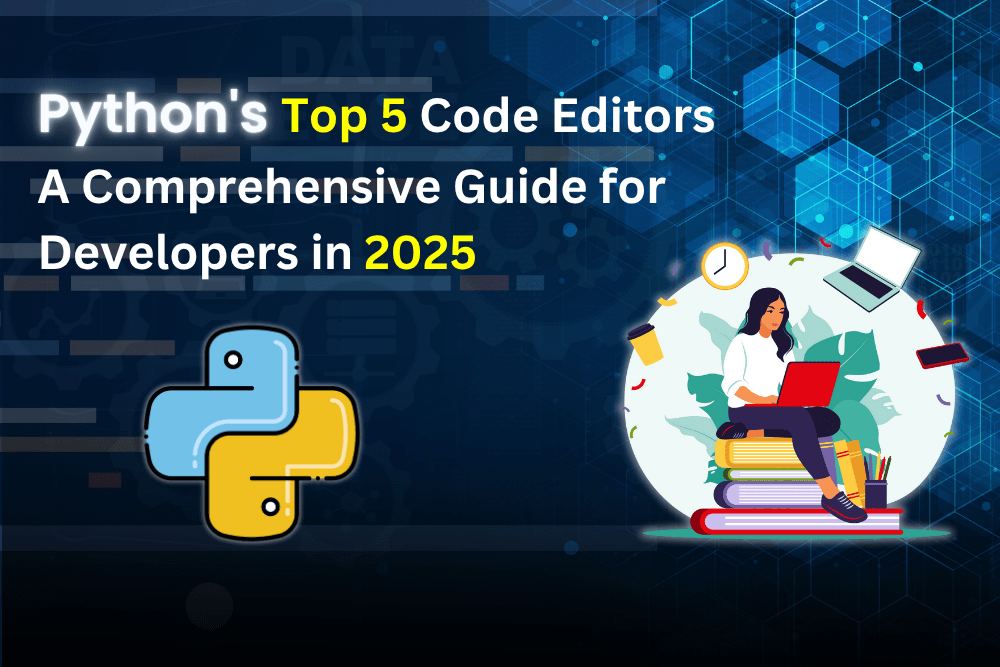Python has emerged as the mainstay of data science because of its extensive library ecosystem, which makes tasks like data processing, machine learning, and visualization easier. This article delves into the most influential Python libraries that have shaped the data science landscape in 2025.
Start Your Coding Journey—Beginner to Advanced Python Courses Available.
1. NumPy: The Foundation of Numerical Computing
NumPy is the core of Python’s numerical computing. Large, multi-dimensional arrays may now be stored and manipulated effectively thanks to the introduction of the potent ndarray object. NumPy provides a range of mathematical functions, linear algebraic operations, and random number capabilities in addition to standard array operations. Data scientists find it vital due to its smooth interaction with other libraries such as SciPy and Pandas.
2. Pandas: Data Manipulation Made Easy
Pandas revolutionized data handling in Python by introducing two primary data structures: Series and DataFrame. Filtering, grouping, and combining datasets are just a few of the simple data manipulation operations made possible by these structures. Built atop NumPy, Pandas bridges the gap between raw data and actionable insights.
3. Matplotlib: Versatile Data Visualization
Matplotlib is the most widely used Python package for creating static, animated, and interactive plots. From basic line plots to intricate 3D graphs, users may create a vast range of visualizations with its pyplot module’s MATLAB-like interface. Matplotlib is a mainstay in the data visualization toolset because of its adaptability and wide range of customization possibilities.
4. Seaborn: Statistical Data Visualization
Based on Matplotlib, Seaborn facilitates the creation of aesthetically pleasing and instructive statistics charts. Plotting complicated datasets is made simple by its strong integration with Pandas data structures. Seaborn’s high-level interface and built-in themes enhance the readability and aesthetics of plots, making data interpretation more intuitive.
5. SciPy: Advanced Scientific Computing
SciPy extends NumPy’s capabilities by providing a collection of algorithms and high-level commands for scientific and technical computing. Its modules cover a broad spectrum of tasks, including optimization, integration, interpolation, eigenvalue problems, and signal processing. SciPy’s robust functionality makes it a valuable asset for researchers and engineers alike.
6. Scikit-learn: Machine Learning Simplified
A variety of supervised and unsupervised learning techniques are available in the robust machine learning toolkit Scikit-learn. Both novices and professionals may use it because of its reliable API and thorough documentation. Tasks including classification, regression, clustering, and dimensionality reduction are supported by Scikit-learn, which also easily interfaces with other Python tools.
The easiest approach to learn Python is to attend a Python course in Pune
7. TensorFlow: Deep Learning Framework
Developed by Google, TensorFlow is an open-source platform for machine learning and deep learning. It allows for the construction of computational graphs, facilitating the deployment of models across various platforms, from desktops to mobile devices. TensorFlow’s scalability and flexibility have made it a preferred choice for complex neural network implementations.
8. Keras: High-Level Neural Networks API
Keras is an easy-to-use Python neural network API. It runs on top of TensorFlow and provides a simplified interface for building and improving deep learning models. Convolutional and recurrent networks are supported by Keras, and its modular architecture makes modification and experimentation simple.
9. PyTorch: Dynamic Computational Graphs
Facebook’s AI Research Lab created PyTorch, which is renowned for its user-friendly interface and dynamic computational graph. It offers seamless Python integration, which speeds up the deployment and development of deep learning models. PyTorch’s flexibility and performance have made it a favorite among researchers and practitioners.
10. Statsmodels: Statistical Modeling
A Python package called Statsmodels offers classes and methods for estimating a wide range of statistical models. It includes tools for performing statistical tests and data exploration. Statsmodels complements SciPy and is geared towards users who are more familiar with statistical modeling.
11. NLTK: Natural Language Toolkit
One of the best platforms for creating Python applications that interact with data in human languages is NLTK. In addition to a collection of text processing tools for categorization, tokenization, stemming, tagging, parsing, and other tasks, it offers user-friendly interfaces to more than 50 corpora and lexical resources. Both research and education make extensive use of NLTK.
12. Gensim: Topic Modeling and Similarity Detection
A Python package called Gensim is used for large-scale document indexing, topic modeling, and similarity retrieval. It is very helpful for natural language processing and unsupervised machine learning applications. Gensim’s algorithms are memory-independent, allowing for efficient processing of large text collections.
If you’re an IT professional wanting to add to your skill set, you’ve come to the perfect spot!
Conclusion
Numerous libraries that address different facets of data science are available in the Python environment. From data processing and visualization to machine learning and deep learning, these libraries provide the tools needed to extract insights and build prediction models. Staying abreast of these libraries and understanding their functionalities is crucial for any data science professional aiming to excel in the field.
Frequently Asked Questions (FAQ)
Q1: Which Python data science libraries are most often used?
A1: The most widely used Python data science libraries include TensorFlow, NumPy, Pandas, Matplotlib, and Scikit-learn. Deep learning, machine learning, and data manipulation are just a few of the many functions that these libraries provide.
Q2: How do I install Python libraries?
A2: You can install Python libraries using pip, the Python package installer. For instance, you may execute the command pip install numpy to install NumPy.
Q3: What makes a library different from a Python module?
A3: A library is an arrangement of modules arranged to offer a set of functions, whereas a Python module is a single file containing Python code.
Q4: Is it free to use Python libraries?
A4: The majority of Python libraries are free and open-source. They are developed and maintained by a team of contributors.
Q5: How can I pick the best Python module for my project involving data science?
A5: Choosing the right library depends on your project requirements. Consider factors like the specific functionality you need





